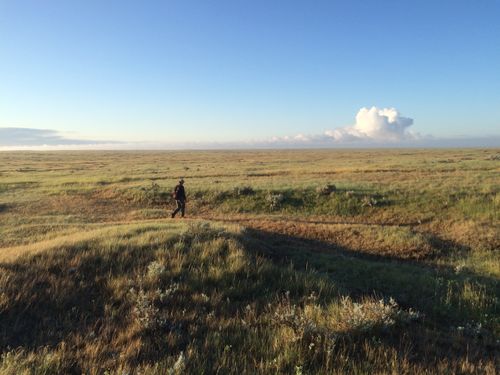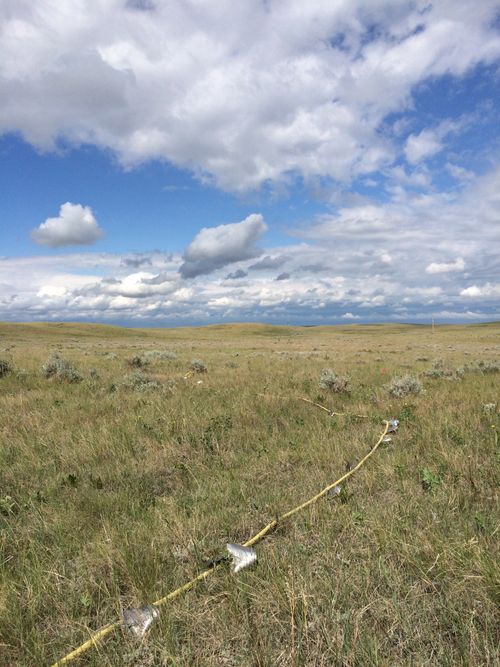Grassland of the Pipit
A word of advice: record the places you go. It is easy to forget how remarkable everyday sounds are until you are far away, both in distance and in time.
Below is one of the only sound recordings I made during my 2015 field season in the grasslands of Alberta, Canada. One of my tasks for that research project was to conduct line transects where I would write down every bird seen and heard while walking a predetermined line for a set amount of time. Before doing each line transect there is a buffer period where you are required to be still, watch, and listen. On this morning I set up my cheap Zoom H2 field recorder to document the buffer period.
At the time I was new enough to birding that I didn’t fully realize I wouldn’t get to hear many of these grassland birds' songs again for a long time, including Savannah Sparrows, Grasshopper Sparrows and Long-billed Curlews. All of these birds stop during migration or even spend winters in Arizona, but while they're here they are mostly quiet. Grassland birds are often cryptic in plumage and habits, usually staying well hidden in the grass. During breeding season, however, they fill the air with song.
The bird that I treasure most from this recording is the Sprague’s Pipit. This is a bird that I have seen exactly once in my life, though I heard them skylarking most mornings in the summer of 2015. In their breeding displays they fly up into thin air, high enough to become essentially invisible from the ground. With wings spread they float downward while delivering a descending cascade of song, loud enough to be heard from the ground where judicious females watch and listen. They then flap up to regain their lost altitude and do it again. And again. And again. Displaying males repeat this process for between a half hour and three hours or more at a time. It is an incredible physical feat; just imagine singing at the top of your lungs while sprinting up a mountain. This only adds to what is for me an aesthetically awesome feat; these kaleidoscopic songs seem to emanate from the sky itself, the particularly expansive sky found above rolling grassland that extends beyond sight in every direction.

Sprague’s Pipits, along with most grassland birds, are in steep decline. There has been an estimated 73% population loss since 1970 – there were nearly four times as many Sprague's Pipits 50 years ago. Destruction and fragmentation of native grassland by development, overgrazing, and invasive species are all taking their toll. But you probably already knew that. You find a similar story everywhere you look when paying attention to the non-human world. One becomes inured to this kind of statistic. Yet the birds are still there and that is something to celebrate. Enjoy it! They return year after year to fill the world with magic. They're right out there, go see!
